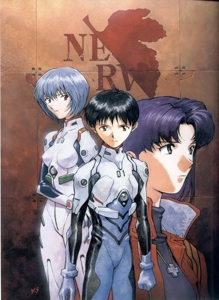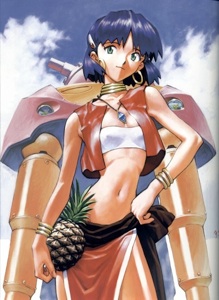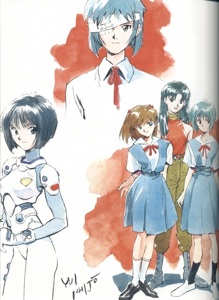Japanese Animation and New Media
Week Nine: Chapter Fifteen: Full Limited Animation
In sum, as animation becomes hyper-limited, the movement implicit in moving images comes to the surface of the image and splits into two.
On the one hand, the animetic interval — the gap between layers — is palpable and right on the surface. Because it is not organized around depth within the image, the image itself tends to split into semi-autonomous layers that are held together in an exploded projection, in particular assembly. This assembly allows for disassembly and reassembly — not only recombining the bits of characters and image but also recombining the series of media elements implicit in the animation (character, music, toy, voice actor, etc).
On the other hand, the character gains the ability to jump from medium to medium. This is because the movement of the moving image is channeled into the character, making it a frame of reference for movement. But its movement takes on a new degree of autonomy from its animation world. At the same time, what defines a character is not a certain type of bodily action in the world, for the character is ‘inactive.’ It is not about action in the world but a kind of mood, feeling, or affect associated with the character. It is ‘recombinant’ but seems to have a ‘soul’ that holds it together. And so, as the character jumps from medium to medium, its appearance may change, not so much that it is completely unrecognizable but a great deal transformed (and otaku worlds play with the limits of this character recognition). In effect, what holds the character together and defines it is not its bodily actions or its appearance. Rather the character seems to have a soul that holds it together yet allows it to disperse and re-coalesce in different forms and in different media. This soul is an apparently ‘inner’ principle that is not bodily action or form.
The anime character becomes a portable animus, a spirit or soul, that can inspirit or inspire different media. Sadamoto Yoshiyuki’s character designs for Nadia and Evangelion are prime examples. He comments, “An easily recognizable silhouette is also important, but I designed the characters (for Evangelion) so that their personalities could be more or less understood at a glance. For example, even the color and length of hair expresses personality.”





